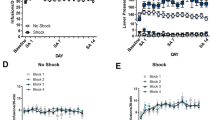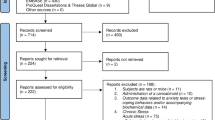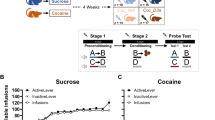Abstract
The co-abuse of marijuana with cocaine is widespread, but it has not been until recently that the relationship between the behavioral effects of cannabinoids and cocaine has begun to be unveiled in animal models. Male Wistar rats were trained to intravenously self-administer cocaine until a stable baseline was reached. Rats then were subjected to a 5-day cocaine deprivation period during which they were treated daily with the cannabinoid receptor agonist WIN 55,212-2 (R-(+)-[2,3-dihydro-5-methyl-3-(4-morpholinylmethyl)pyrrolo[1,2,3-de]-1,4-benzoxazin-6-yl]-1-naphthalenylmethanone mesylate) (0, 0.3, 1, and 3 mg/kg; i.p.). Following this subchronic treatment, rats were tested, in counterbalanced order, in a test of anxiety (elevated plus-maze), as well as extinction and cue-induced reinstatement tests, the latter conducted according to a between-within procedure. Subchronic administration of WIN 55,212-2 was found to produce dose-dependent alterations of performance in the extinction, reinstatement, and anxiety tests with the lowest dose of WIN 55,212-2 producing the highest resistance to extinction and reinstatement, and the highest dose of WIN 55,212-2 producing the highest anxiolytic activity. Subchronic treatment with WIN 55,212-2 in rats without a history of cocaine self-administration did not affect anxiety levels. The results suggest an important role of the cannabinoid system in neuronal processes underlying cocaine seeking behavior. However, further studies will be necessary to understand possible implications of these findings for a role of the cannabinoid system as a treatment target for human cocaine abuse.
Similar content being viewed by others
Log in or create a free account to read this content
Gain free access to this article, as well as selected content from this journal and more on nature.com
or
References
Aceto MD, Scates SM, Martin BB (2001). Spontaneous and precipitated withdrawal with a synthetic cannabinoid, WIN 55,212-2. Eur J Pharmacol 416: 75–81.
Arnold JC (2005). The role of the endocannabinoid transmission in cocaine addiction. Pharmacol Biochem Behav 81: 396–406.
Arnold JC, Topple AN, Hunt GE, McGregor IS (1998). Effects of pre-exposure and co-administration of the cannabinoid receptor agonist CP 55,940 on behavioral sensitization to cocaine. Eur J Pharmacol 354: 9–16.
Blanchard DC, Blanchard RJ (1999). Cocaine potentiates defensive behaviours related to fear and anxiety. Neurosci Biobehav Rev 23: 981–991.
Caine SB, Lintz Z, Koob GF (1993). Intravenous drug self-administration techniques in animals. In: Sahgal A (ed). Behavioral Neuroscience. IRL at Oxford UP: New York. pp 117–143.
Chaperon F, Thiebot MH (1999). Behavioral effects of cannabinoid agents in animals. Crit Rev Neurobiol 13: 243–281.
Cossu G, Ledent C, Fattore L, Imperato A, Bohme GA, Parmentier M et al (2001). Cannabinoid CB1 receptor knockout mice fail to self-administer morphine but not other drugs of abuse. Behav Brain Res 118: 61–65.
Cruz AP, Frei F, Graeff FG (1994). Ethopharmacological analysis of rat behavior on the elevated plus-maze. Pharmacol Biochem Behav 49: 171–176.
De Vries TJ, Schoffelmeer AN (2005). Cannabinoid CB1 receptors control conditioned drug seeking. Trends Pharmacol Sci 26: 420–426.
De Vries TJ, Shaham Y, Homberg JR, Crombag H, Schuurman K, Dieben J et al (2001). A cannabinoid mechanism in relapse to cocaine seeking. Nat Med 7: 1151–1154.
DeVries AC, Pert A (1998). Conditioned increases in anxiogenic-like behavior following exposure to contextual stimuli associated with cocaine are mediated by corticotropin-releasing factor. Psychopharmacology 137: 333–340.
Ettenberg A (2004). Opponent process properties of self-administered cocaine. Neurosci Biobehav Rev 27: 721–728.
Fattore L, Martellotta MC, Cossu G, Mascia MS, Fratta W (1999). CB1 cannabinoid receptor agonist WIN 55,212-2 decrease intravenous cocaine self-administration in rats. Behav Brain Res 104: 141–146.
Ferrari F, Ottani A, Giuliani D (1999). Influence of the cannabinoid agonist HU-210 on cocaine- and CQP 201–403-induced behavioral effects in rat. Life Sci 65: 823–831.
Foltin RW, Fischman MW, Pippen PA, Kelly TH (1993). Behavioral effects of cocaine alone and in combination with ethanol or marijuana in humans. Drug Alcohol Depend 32: 93–106.
Freund TF, Katona I, Piomelli D (2003). Role of endogenous cannabinoids in synaptic signalling. Physiol Rev 83: 1017–1066.
Goeders NE, Clampitt DM (2002). Potential role for the hypothalamo-pituitary-adrenal axis in the conditioned reinforcer-induced reinstatement of extinguished cocaine seeking in rats. Psychopharmacology 161: 222–232.
González S, Cascio MG, Fernandez-Ruiz J, Fezza F, Di Marzo V, Ramos JA (2002a). Changes in endocannabinoid contents in the brain of rats chronically exposed to nicotine, ethanol or cocaine. Brain Res 954: 73–81.
González S, Fernandez-Ruiz J, Sparpaglione V, Parolaro D, Ramos JA (2002b). Chronic exposure to morphine, cocaine or ethanol in rats produced different effects in brain cannabinoid CB(1) receptor binding and mRNA levels. Drug Alcohol Depend 66: 77–84.
Harris GC, Wimmer M, Aston-Jones G (2005). A role for lateral hypothalamic orexin neurons in reward seeking. Nature 437: 556–559.
Hayase T, Yamamoto Y, Yamamoto K (2005). Persistent anxiogenic effects of a single or repeated doses of cocaine and methamphetamine: interactions with endogenous cannabinoid receptor ligands. Behav Pharmacol 16: 395–404.
Hilairet S, Bouaboula M, Cerriere D, Le Fur G, Casellas P (2003). Hypersensitization of the Orexin 1 receptor by the CB1 receptor: evidence for cross-talk blocked by the specific CB1 antagonist, SR141716. J Biol Chem 278: 23731–23737.
Hill MN, Gorzalka BB (2006). Increased sensitivity to restraint stress and novelty-induced emotionality following long-term, high dose cannabinoid exposure. Psychoneuroendocrinology 31: 526–536.
Koob GF, Le Moal M (2006). Psychostimulants. In: Koob GF, Le Moal M (eds). Neurobiology of Addiction. Elsevier Inc.: San Diego. pp 69–120.
Lesscher HM, Hoogveld E, Burbach JP, van Ree JM, Gerritis MA (2004). Endogenous cannabinoids are not involved in cocaine reinforcement and development of cocaine-induced behavioral sensitization. Eur Neuropsychopharmacol 15: 31–37.
Li CS, Milivojevic V, Constable RT, Sinha R (2005). Recent cannabis abuse decreased stress-induced BOLD signals in the frontal and cingulate cortices of cocaine dependent individuals. Psychiatry Res 140: 271–280.
Lopez-Moreno JA, Gonzalez-Cuevas G, Rodriguez de Fonseca F, Navarro M (2004). Long-lasting increase of alcohol relapse by the cannabinoid receptor agonist WIN 55,212-2 during alcohol deprivation. J Neurosci 24: 8245–8252.
Lukas SE, Sholar M, Kouri E, Fukuzako H, Mendelson JH (1994). Marihuana smoking increases plasma cocaine levels and subjective reports of euphoria in male volunteers. Pharmacol Biochem Behav 48: 715–721.
Maldonado R, Valverde O, Berrendero F (2006). Involvement of the endocannabinoid system in drug addiction. Trends Neurosci 29: 225–232.
Martellotta MC, Cossu G, Fattore L, Gessa GL, Fratta W (1998). Self-administration of the cannabinoid receptor agonist WIN 55,212-2 in drug-naïve mice. Neuroscience 85: 327–330.
Martin M, Ledent C, Parmentier M, Maldonado R, Valverde O (2000). Cocaine, but not morphine, induces conditioned place preference and sensitization to locomotor responses in CB1 knockout mice. Eur J Neurosci 12: 4038–4046.
Marx J (2006). Drugs inspired by a drug. Science 311: 322–325.
Navarro M, Hernandez E, Muñoz RM, Del Arco I, Villanua MA, Carrera MR et al (1997). Acute administration of the CB1 cannabinoid receptor antagonist SR 141716A induces anxiety-like responses in the rat. Neuroreport 8: 491–496.
Patel S, Hillard CJ (2006). Pharmacological evaluation of cannabinoid receptor ligands in a mouse model of anxiety: further evidence for an anxiolytic role for endogenous cannabinoid signaling. J Pharmacol Exp Ther 318: 304–311.
Robinson TE, Berridge KC (2001). Mechanisms of action of addictive stimuli. Incentive-sensitization and addiction. Addiction 96: 103–114.
Rodriguez de Fonseca F, Carrera MR, Navarro M, Koob GF, Weiss F (1997). Activation of corticotropin-releasing factor in the limbic system during cannabinoid withdrawal. Science 276: 2050–2054.
Shaham Y, Shalev U, Lu L, de Wit H, Stewart J (2003). The reinstatement model of drug relapse: history, methodology and major findings. Psychopharmacology 168: 3–20.
Sinha R, Fuse T, Aubin LR, O'Malley SS (2000). Psychological stress, drug-related cues and cocaine craving. Psychopharmacology 152: 140–148.
Sinha R, Talih M, Malison R, Cooney N, Anderson GM, Kreek MJ (2003). Hypothalamic-pituitary-adrenal axis and sympatho-adreno-medullary responses during stress-induced and drug cue-induced cocaine craving states. Psychopharmacology 170: 62–72.
Soria G, Mendizabal V, Tourino C, Robledo P, Ledent C, Parmentier M et al (2005). Lack of CB1 cannabinoid receptor impairs cocaine self-administration. Neuropsychopharmacology 30: 1670–1680.
Valverde O (2005). Participation of the cannabinoid system in the regulation of emotional-like behavior. Curr Pharm Des 11: 3421–3429.
Viveros MP, Marco EM, File SE (2005). Endocannabinoid system and stress and anxiety responses. Pharmacol Biochem Behav 81: 331–342.
Weiss F (2005). Neurobiology of craving, conditioned reward and relapse. Curr Opin Pharmacol 5: 9–19.
Witkin JM, Tzavara ET, Nomikos GG (2005). A role for cannabinoid CB1 receptors in mood and anxiety disorders. Behav Pharmacol 16: 315–331.
Wood DM, Lal H (1987). Anxiogenic properties of cocaine withdrawal. Life Sci 41: 143–146.
Yang XM, Gorman AL, Dunn AJ, Goeders NE (1992). Anxiogenic effects of acute and chronic cocaine administration: neurochemical and behavioral studies. Pharmacol Biochem Behav 41: 643–650.
Acknowledgements
This work was supported by NIH/NIDA grant DA 07348 (FW) and by the Spanish Fondo de Investigación Sanitaria (Red de Trastornos Adictivos G03/05), the Comunidad Autónoma de Madrid GR/SAL/0541/2004, the Plan Nacional Sobre Drogas (Ministerio de Sanidad), The European Fifth Framework Programme QLRT-2000–01691 and the MEC SAF2005–04926, (MN). Gustavo González-Cuevas is a predoctoral fellow of the Ministerio de Educación y Cultura in Spain.
Author information
Authors and Affiliations
Corresponding author
Rights and permissions
About this article
Cite this article
González-Cuevas, G., Aujla, H., Martin-Fardon, R. et al. Subchronic Cannabinoid Agonist (WIN 55,212-2) Treatment during Cocaine Abstinence Alters Subsequent Cocaine Seeking Behavior. Neuropsychopharmacol 32, 2260–2266 (2007). https://doi.org/10.1038/sj.npp.1301365
Received:
Revised:
Accepted:
Published:
Issue date:
DOI: https://doi.org/10.1038/sj.npp.1301365
Keywords
This article is cited by
-
Attenuation of nicotine-taking and nicotine-seeking behavior by the mGlu2 receptor positive allosteric modulators AZD8418 and AZD8529 in rats
Psychopharmacology (2016)
-
A neuropeptide‐centric view of psychostimulant addiction
British Journal of Pharmacology (2008)



